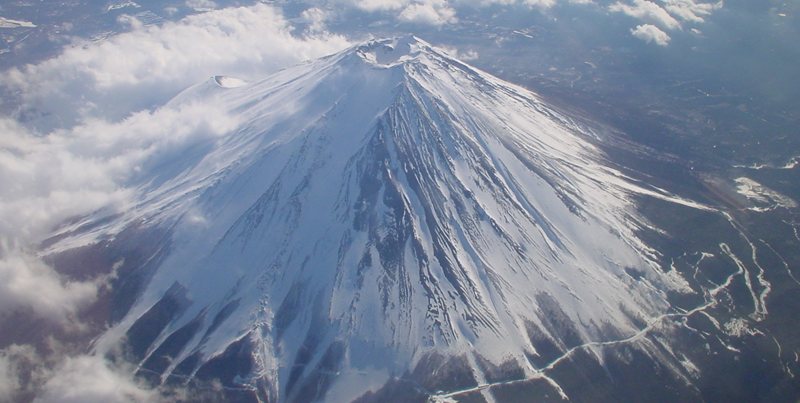
Climbing Mount Fuji - the single most popular tourist site in Japan - is very appealing not only among Japanese but also foreign tourists, who seem to make up more than a third of all hikers.
At 3776 meters Mount Fuji is Japan's highest and most prominent mountain, is an active volcano in central Japan and contributes to Japan's physical, cultural, and spiritual geography.
Early July to mid-September is the official climbing season when the trails and mountain facilities are open. During this period the mountain is usually free of snow, the weather is relatively mild, access by public transportation is easy, and the mountain huts are operating. Anyone without much hiking experience is advised to tackle the mountain during the official climbing season.
The peak season for climbing Mount Fuji is during the school vacations which last from around July 20 to the end of August. The peak of the peak is reached during the Obon Week in mid-August, when climbers literally have to stand in queues at some passages.
The Obon week is one of Japan's three major holiday seasons, accompanied by intensive domestic and international travel activities and increased accommodation rates.
While you may want to avoid the Obon Week, we believe that by avoiding the crowds in general, you would miss out one of the most interesting aspects of climbing Mount Fuji, which is the camaraderie and unique experience of ascending the mountain among hundreds of equally minded people from across the world.
Despite its steep slopes, Mount Fuji can be climbed up quite easily even by beginners, for it has signboards and mountain huts. Because climbers will be confronted by the harsh conditions of nature, they should try to become acquainted with the features of Mount Fuji well in advance, and make thorough plans before climbing up the mountain.
Things to remember: The difference in temperature between the summit and the foothills is more than 20oC.
-
Thunder clouds are apt to occur and cause a sudden weather change.
-
Lightning is highly possible and very dangerous.
-
Dense fog is apt to occur in the summer, during which you may lose your way.
Climbers may experience mountain sickness. It is therefore important to drink water regularly. To prevent mountain sickness, you should rest for one to two hours at the altitude of the 5th station so that you can adapt to a higher altitude before departure. In addition to that, you should walk slowly at a constant pace, take rests at regular intervals but not too long so as to not get cold and take deep breaths.